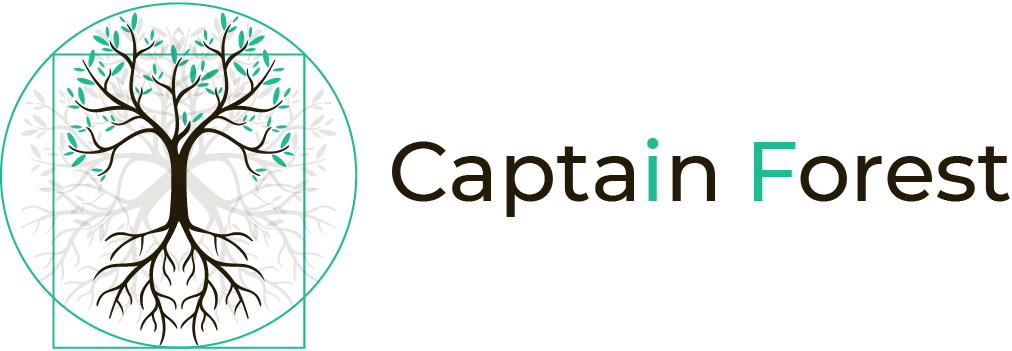Why Is Plastic Waste Management Challenging in Indonesia?

While Indonesia used to be cited among countries facing important waste management issues, in recent years, the state has made notable efforts such as increasing waste treatment capacity and promoting waste reduction and recycling.
To understand challenges on the ground, Captain Forest interviewed Nina Van Toulon, Initiator of the Indonesian Waste Platform. She explained the difficulties of managing waste and shared some of the solutions she and her colleagues deployed in Indonesia through their non-profit.
Q: What are the challenges with plastic waste management in Indonesia?
The first challenge is the geography and demography of the country itself:
- There are 17,000+ islands and 100,000+ km of coastline
- Approximately 40% (1) of the Indonesian population lives in rural regions where the collection systems are poorly developed.

So, collecting and transporting waste from rural areas and multiple islands to Java is operationally challenging and costly.
Second, waste transportation from other regions in the country to Java involves using dirty diesel boats and trucks. As a result, waste collection and transportation activities are carbon-intensive and need to be decarbonized.
Third, recyclable and non-recyclable plastics are burned at the household level across the country because people need to get rid of them, and they are not being collected. As a result, local communities are impacted – by health risks – especially women, whose daily household chores consist of burning waste.
Q: How does the Indonesian Waste Platform solve plastic waste management issues?
Our platform connects stakeholders and promotes collaboration for issues related to waste management in Indonesia. We built our value proposition around these pillars:
- Raising awareness about the impact of open burning (2) in rural communities,
- Developing capacity-building programs to share best practices, especially on how to build collection systems in remote regions,
- Collecting waste from fishing communities on outlying islands in and around Komodo National Park and then transporting recyclable plastics to Java,
- Promoting the importance of reduction and refilling,
- Advancing waste policy development,
- Designing exit strategies so the community can manage the system alone.
Q: How many islands and villages have you targeted?
We focused on establishing community-led waste management in and around Komodo National Park in East Indonesia for two reasons:
first, this location is remote and logistically complicated, and then, it is representative of many other regions in Indonesia.
We needed to show how a collection system in such areas can function successfully.
Q: Can you describe the steps you took to manage waste and recycle plastic in those villages?
While large cities on Java might have collection systems that are linked to recycling factories, the situation in rural areas is very different.
Every day, tons of plastics are littered on land, rivers, lakes, and oceans. Additionally, waste materials are burned daily simply because there is no collection system, and households must get rid of their waste.
So, the primary focus of our work is to educate community members in remote areas about the need to reduce their plastic footprint and train them on how to manage their waste:
- We educate local populations:
- We teach fishermen to bring back their fish gear,
- and explain how to manage their waste to women.
- We ask locals to segregate their waste:
- Most people have livestock, so organic waste is not a problem and can be composted or given to goats, chickens, cats, and dogs,
- We teach women to keep the waste generated in their household apart from recyclables such as recyclable plastic, glass, cans, and cartons,
- We also ask women to keep the non-recyclables in bags instead of littering or burning them.
- We collect and recycle waste:
- Our boat collects all materials from the islands on a fixed weekly schedule to bring to our sorting center,
- Recyclables are sorted, compressed, baled, and weighed to prepare for shipment to Surabaya on Java to a high-tech recycling factory,
- Non-recyclables are sent to the landfill.
Q: Are there technologies able to recycle any type of plastic?
Our recycling partner on Java and their associated recyclers have high-tech mechanical recycling factories and process PET, PP, HDPE, and LDPE. However, those machines cannot recycle all plastic types. This is why we advocate advancing refilling systems to reduce or eliminate plastic.
Q: How do you fund these collection operations?
In 2019 the Indonesian Ministry of Environment and Forestry published their decree’ Road Waste Map by Producer’, which is a start towards an Extended Producer Responsibility system.
Based on that decree, our team was financially supported by a sizeable Indonesian brand owner to develop our collection system on Komodo Island. Hence, we named our approach the ‘Komodo Model‘.
Then, the local district government gave us an obsolete building, where we opened our sorting center.
After the first year, a foundation supported our activity in the long term, and as a result, we have expanded to more islands.
Q: What is the total quantity of plastic waste in Indonesia?
The data I’m sharing is a compilation of various reports (3) (4).
Indonesia generates approximately 42 million tons of municipal waste and 7.8 million tons of plastic waste annually, of which 4.9 million tons are mismanaged — e.g., uncollected, disposed of in open dumpsites, or leaked from formal unsanitary landfills.
Rural and remote communities (RRCs) near shorelines and inland – alongside rivers- contribute to marine pollution.

Due to limited waste collection systems, rural areas generate the most significant amounts of mismanaged plastic waste.
Despite having roughly, the same population as urban areas, rural areas generate two-thirds (3.5 million tons per year) of the mismanaged plastic waste in Indonesia.
85% of plastic waste in rural areas remains uncollected.
Besides, 70% of the 271 million Indonesians live near a shoreline.
We estimate that roughly 60 kton / year of plastic waste ends up in the marine environment from waste disposed of in the coastal zone and small islands.
Q: What is the actual capacity of recycling factories in Java?
I do not know their maximum capacity; however, they can process more.
Due to the lack of collection, the mechanical recycling factories in Java need more feedstock from inside Indonesia. Our recycling partner (5) on Java has high-tech facilities, like European factories, running 24/7 with a constant flow of recyclables.
Q: Is it feasible to have more facilities across the country?
It is not cost-effective to have such facilities in Flores and other remote regions simply because there would need to be more feedstock to operate such a costly operation.
Q: How do recycling factories manage non-recyclable waste and plastic?
Recycling factories don’t manage non-recyclable materials: what cannot be recycled is landfilled in mostly non-sanitary landfills. Then, once full, a new dump is opened.
Q: Do you know any solution for non-recyclable plastic?
“Refuse Derived Fuel” (RDF) production is presented as a solution to non-recyclable waste, but in reality, it is not. This solution consists in producing pellets from plastic non-recyclable waste. Then, these RDF pellets are used as an energy source in kilns of cement factories. Several environmental organizations, including IPEN (6), have published their concerns about this way of disposing of plastics.
Q: To conclude, what do you recommend other countries do to manage their plastic waste?
 First, to focus on advancing waste and climate literacy programs. The young generation needs to be empowered to drive change to mitigate the plastic and climate crises, which are totally linked in many ways. Empowered youth are our hope, and at the same time, their future is at stake.
First, to focus on advancing waste and climate literacy programs. The young generation needs to be empowered to drive change to mitigate the plastic and climate crises, which are totally linked in many ways. Empowered youth are our hope, and at the same time, their future is at stake.
Second, we all need together to counter the strong lobby of the petrochemical sector and its related industries. They are organized and powerful internationally, while the rest of the global community is not.
Then, we need a thriving recycling sector and functioning collection systems to prevent the leakage of plastics into the environment. We all know how ecosystems are degrading while we speak and how plastic and waste pollution impact all life on this planet.
However, on top of recycling, I recommend primarily focusing on advancing the reuse economy and alternative delivery models. The norm of single-use needs to change because ‘normal is over’. Our consumption patterns need to change too.
Finally, I recommend reading our work. Together with our sister networks, we provide an overview of everything we do, including environmental education (7).
We share our Komodo Model and experiences to help others do the same in other locations. They can adapt our model to the local situation.
We advise them to collaborate with the local multi-sector stakeholder network. That collaboration is crucial because organizations can only be successful with the support of and cooperation with local government, local leaders, schools, women’s groups, local business community!
Did you find this article insightful? Please comment and react!
Read more?
To learn more about plastic pollution and its impact on Ocean health, click here.





